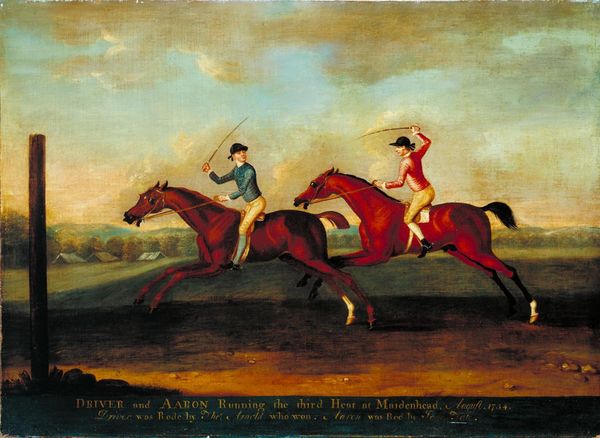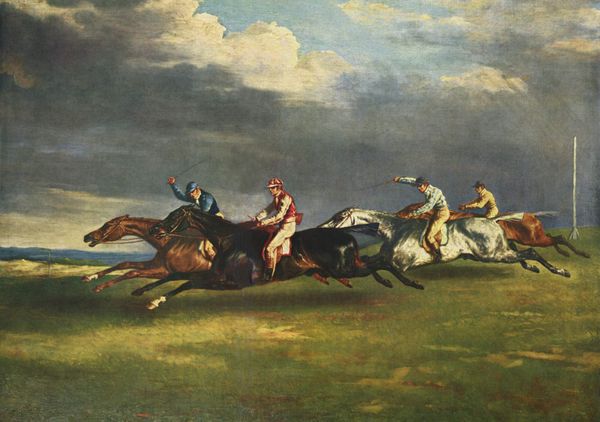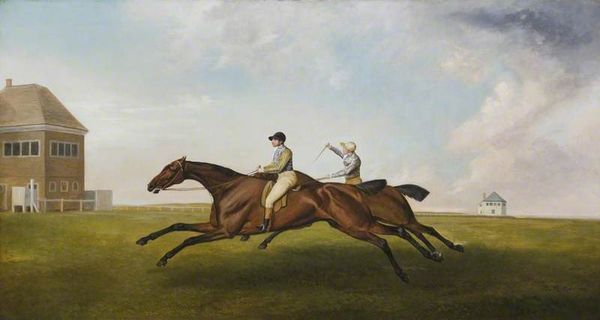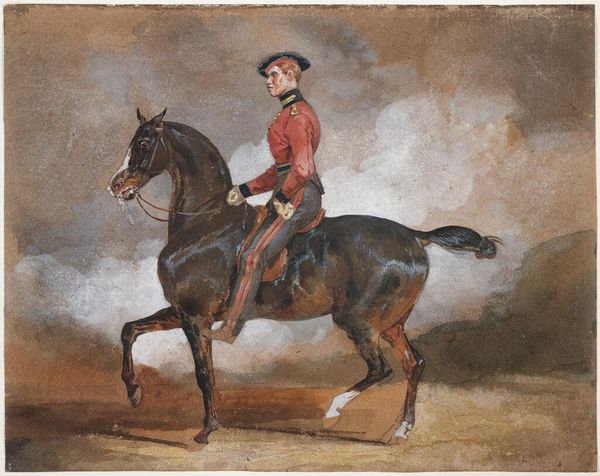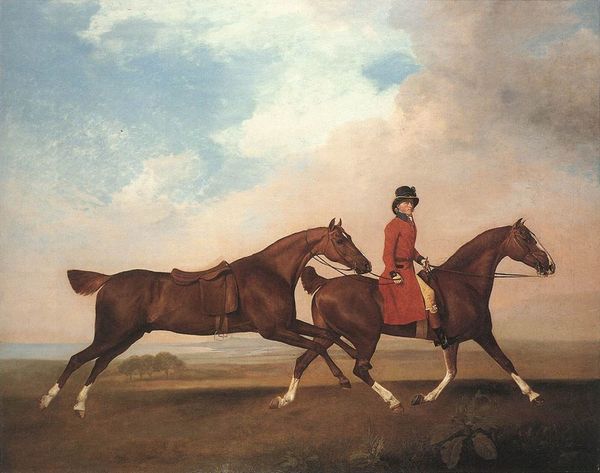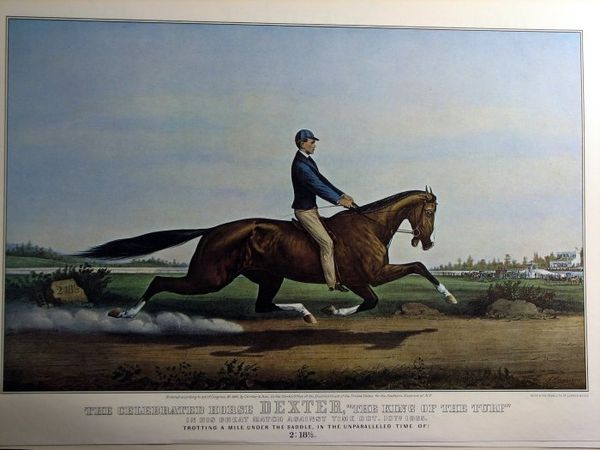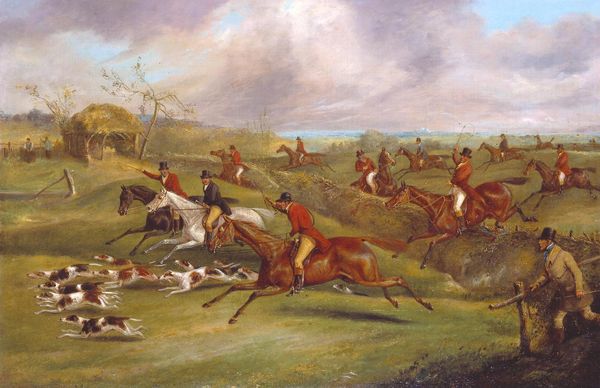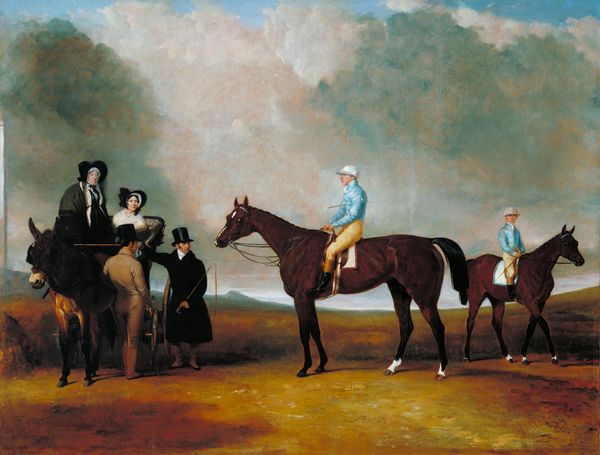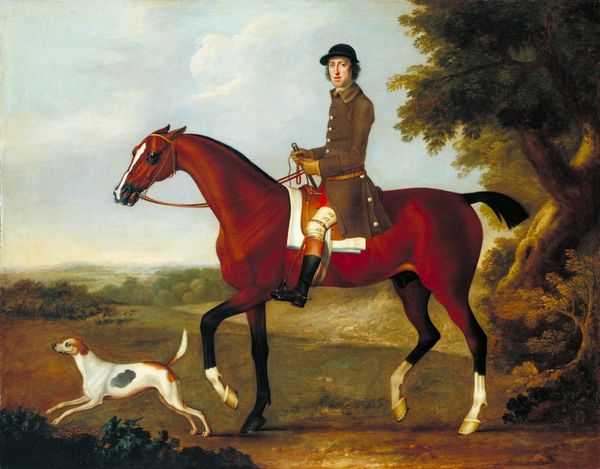
painting, oil-paint
#
animal
#
painting
#
oil-paint
#
landscape
#
figuration
#
oil painting
#
romanticism
#
horse
#
genre-painting
Dimensions: 27 x 37.5 cm
Copyright: Public domain
Editor: This is Théodore Géricault’s “The Horse Race,” painted in 1824 using oil paint. The texture seems so raw, and the color palette feels limited yet effective in conveying movement and energy. What catches your eye when you look at this piece? Curator: Initially, I'm drawn to the composition. Note the pronounced horizontal orientation and how Géricault structures the dynamic thrust of the horses within it. The rhythmic repetition of forms – the horses' bodies, the jockeys, the landscape in the background – is highly organized. Consider the line of sight; does it feel as though the perspective amplifies the sensation of velocity and impulsion? Editor: It does, absolutely. The blurring effect, how the background kind of melts, definitely emphasizes that sense of speed. The strong diagonal lines create motion too. Is that use of blurring a recognized technique in the art world, particularly in the Romantic period? Curator: Indeed. Consider the materiality – observe the distinct brushstrokes, the application of pigment. The work possesses a pronounced painterliness, does it not? And in turn that becomes crucial in suggesting a lack of clear resolution, a dissolution. This absence of absolute clarity is itself meaningful and thematically vital. Editor: So it’s not just about representing the race, but also about how the *idea* of speed changes the form of the work itself? Curator: Precisely! This interplay between the representational and the formal is critical in evaluating Géricault's objective in the work, as opposed to a literal transcription of a horse race. In considering the forms themselves, how is one invited to interpret the *idea* of such energy as a function of the painting itself? Editor: I never really thought about art quite this way. I always approached it from a perspective rooted in context, history and maybe symbolism. Thanks for explaining it through forms! Curator: Art provides continuous means of learning about visual structures, from a very specific viewpoint or context, as you know.
Comments
No comments
Be the first to comment and join the conversation on the ultimate creative platform.
